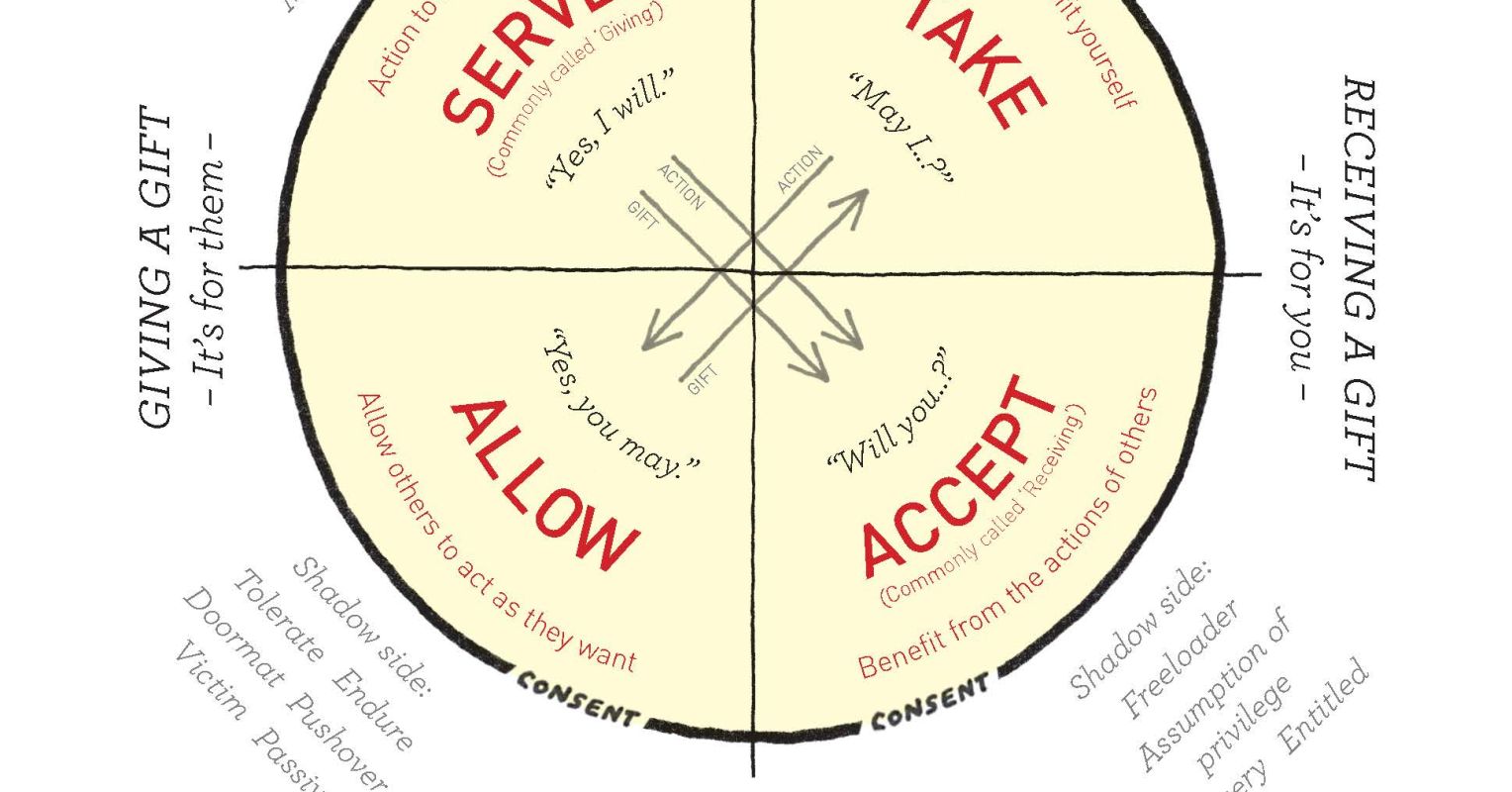
"The Wheel of Consent is a comprehensive framework to help individuals, partners, and communities co-create a healthy culture of consent. It is powerful because it breaks down an action and highlights the difference between who is doing it and who it is for. By clarifying the active role and who benefits from the action, a lot of hidden dynamics are revealed."
"The framework is based on four quadrants that represent different types of interaction: Serving: I do, for others: I take action for other people's benefit. Taking: I do, for me: I take action for my own benefit (with others' consent). Allowing: Others do, for them: I allow you to do something for your own benefit. Accepting: Others do, for me: I allow you to do something for my benefit."
"They begin with the ability to establish clear consent agreements with all parties involved. Yet, consensual understanding can be challenging for many reasons, including peer pressure, social conditioning and cultural norms, historical trauma, and power and privilege imbalances But there is a framework to help people understand the dynamics of giving and receiving in intimate interactions. It's the Wheel of Consent, a tool developed by Dr. Betty Martin, for exploring consent, boundaries and mutually pleasurable exchanges."
Consent is a conscious choice requiring clarity of intention beyond mere permission. Assertiveness involves confidently expressing needs while boundaries communicate clear yeses and nos. Power imbalances, social conditioning, peer pressure, cultural norms, and historical trauma can complicate mutual consent. The Wheel of Consent clarifies who is doing an action and who benefits, revealing hidden dynamics. The framework’s four quadrants—Serving, Taking, Allowing, Accepting—distinguish actions done for others or self and actions allowed for others or self. Clear consent agreements grounded in these distinctions support healthier, mutually pleasurable interactions and stronger relationships.
Read at Psychology Today
Unable to calculate read time
Collection
[
|
...
]